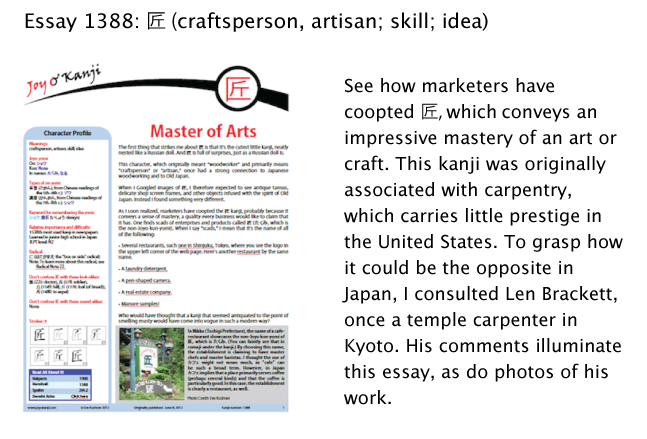Security Breaches
This week brought news of another security breach. This time people reportedly hacked into LinkedIn, accessing the passwords of more than 6.4 million people. I don't yet know if I was one of those people. Not long ago, hackers stole credit card information from Zappos, which did affect me directly; someone soon hacked my Yahoo email account, which caused massive problems. Since then, I've been acutely aware of spam emails from friends whose accounts have also obviously been hacked. The problem seems never-ending.
This epidemic also feels very modern. But is it?
Even in Japan, where crime is low and people have a reputation for honesty, there have long been precautionary measures against fraud. You can see evidence of that in a sign outside a shop in Hakone:

Photo Credit: Eve Kushner
Reading this sign, I felt confused. I knew that 八, 百, 四, and 十 collective represented "840" and that 円 (えん) meant "yen." But what of the bookends, 金 and 也?
It turns out that this 金- serves as a prefix before a precise amount of money. Meanwhile, the non-Joyo -也 acts as a suffix here and performs the same function. With -也, someone can show that a monetary amount is a whole number with no decimal quantity trailing after it.
It seems strange to imagine representing a decimal quantity with kanji, but the Japanese once used a currency called 銭 (せん), worth one-hundredth of a yen.
Sandwiching an amount between 金 and 也 also prevents the number from being modified on either end. That's what I meant by "security measure." For instance, without those two symbols, someone could add on to 八百四十円 as follows:
八百四十円 (840JPY) → 九千八百四十円 (9,840JPY)
八百四十円 (840JPY) → 八百四十円五十銭 (840.50JPY)
Of course, no one would alter a price sign to increase the value!
In daily life, it isn't necessary to use these two precautionary end symbols, simply because there's no imminent threat of alteration, but my proofreader says people use them quite randomly anyway, especially when they like the sign to sound formal, either seriously or jokingly.
However, when the Japanese use kanji on invoices, in contracts, in accounting records, and the like, they do use these symbols. Otherwise, unscrupulous types could easily alter amounts. In addition to tacking kanji onto either end, it's easy to change 一, 二, and 三 into higher numbers. For that reason, people use the more complicated looking "formal numbers" (known as 大字, だいじ) in financial and legal documents. In place of 一, 二, and 三, they write 壱, 弐, and 参, respectively. People also use 拾 instead of 十 because it's simple to change 十 into 千. For a more complete list, see this Wikipedia page, which lists both outdated (旧) and current (現) versions of 大字.
When giving money at a wedding or funeral (as is the custom), the Japanese write the exact amount of the contribution on an envelope. Because the situation is so formal, it feels appropriate to use 大字.
By the way, if you ever feel like sending me money for any reason, I won't hold it against you if you leave off the 大字!
Shifting gears, I wanted to let you know about several developments at Joy o' Kanji. I've just published essay 1388 on 匠 (craftsperson, artisan; skill; idea). If you read two of my March blogs, "Learning to See" and "The Spirit of the Thing," you'll know how long I've been excited about this essay. Researching and writing it prompted me to interview Len Brackett (once a temple carpenter in Kyoto), which I found to be an ultra-stimulating conversation. Anyway, here's a preview of the essay:

On top of that, I've just published a Thematic Explorations piece, "Oddball Additions to the Joyo Set." I wrote it to supplement Jim Breen's wonderful blog, which ran last week.
Finally, I added some terrific pictures to essays and uploaded new versions of the PDFs. If you go to the Table of Contents, you'll therefore see plenty of essays marked as revisions.
That'll do it for now. Have a great weekend!

Comments